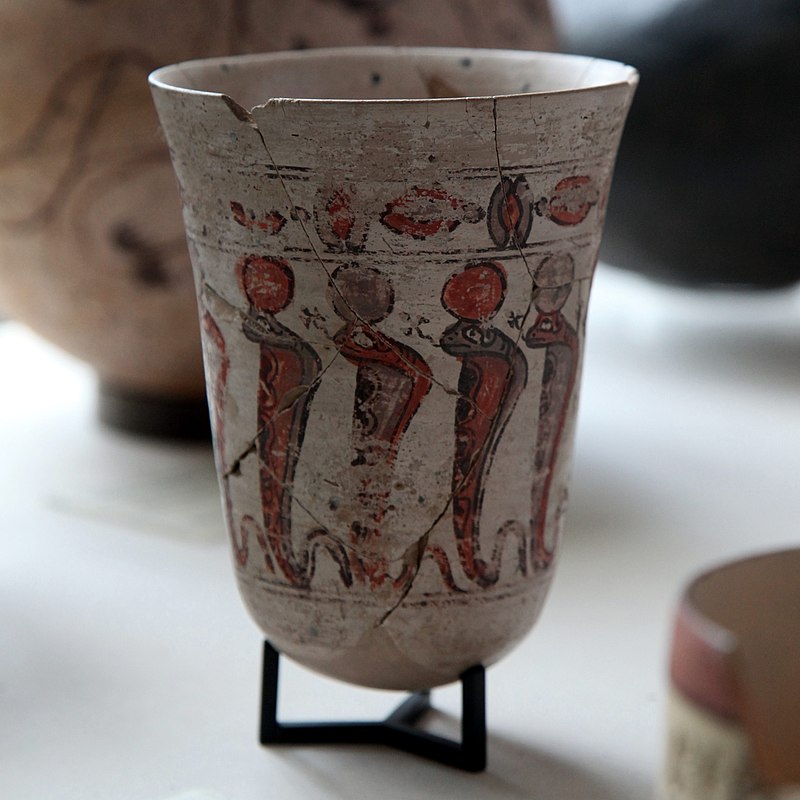Egyptian Pottery
Egyptian pottery played a crucial role in daily life, serving both practical and ritualistic purposes in ancient Egyptian society.

These ceramic objects were essential for storing, preparing, and transporting various commodities such as food, beverages, and raw materials. From beer and wine mugs to water jugs and bread molds, pottery items were ubiquitous in Egyptian households, facilitating everyday activities like cooking and dining. Additionally, pottery was used for ceremonial and religious rituals, with some vessels specifically crafted for offerings and libations to gods and ancestors. As grave goods, pottery artifacts were buried alongside the deceased, symbolizing their journey into the afterlife and providing them with essential items for the journey. Through the study of Egyptian pottery, archaeologists gain valuable insights into ancient Egyptian culture, technology, and socioeconomic practices.
Faience
Egyptian faience holds a unique place in the realm of ancient pottery due to its distinctive characteristics and widespread use in ancient Egypt.

While technically closer to pottery, faience is often discussed alongside Egyptian glass in surveys of ancient artifacts. This versatile material was extensively utilized for crafting a wide range of small objects, including beads, amulets, small statues, and jewelry, found in both elite and common contexts. Faience was particularly favored for crafting scarabs, ushabti figures, and other protective amulets due to its durability and smooth texture, which made it comfortable to wear against the skin. Its popularity in ancient Egyptian society underscores its significance in both practical and symbolic realms, serving as a testament to the craftsmanship and artistic prowess of ancient Egyptian artisans.






2. Bowl, c. 200–150 BC. Metropolitan Museum of Art.
3. Ushabti, c. 1294–1279 BC. Louvre. (c) Rama
4. Vases probably used for the funeral of Rameses II.
5. Senet gameboard, with counters and sliding drawer to contain them, c. 1390-1353 BC. Inscribed with name of King Amenhotep III. Brooklyn Museum.
6. Cup with Lotus decoration. Louvre. (c) Loic Evanno
Clay
Egyptian potters demonstrated remarkable skill and creativity through the use of various decorative techniques and motifs, each often associated with specific periods in ancient Egyptian history.

Across different eras, pottery decoration ranged from simple geometric patterns to intricate scenes depicting religious beliefs, daily life, and mythological narratives. During the Predynastic and Early Dynastic periods, pottery was often adorned with geometric designs and stylized representations of animals, plants, and human figures. As Egypt’s civilization flourished, pottery decoration became increasingly sophisticated, with artisans incorporating elaborate motifs such as hieroglyphs, symbolic imagery, and scenes from religious texts or royal ceremonies. The Middle Kingdom witnessed the rise of intricate floral and faunal motifs, while the New Kingdom saw a resurgence of vivid colors and detailed narrative scenes.



2. Pot with depiction of a galloping horse from the 18th Dynasty. Neues Museum, Berlin. (c) Didia
3. Storage vessel with blue decoration from the 18th Dynasty. Neues Museum, Berlin. (c) Didia
